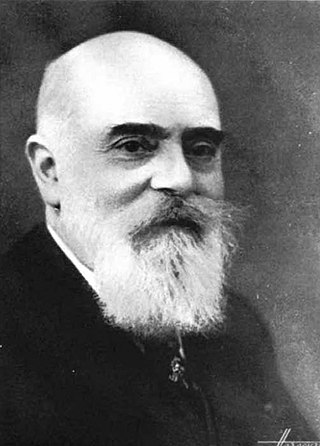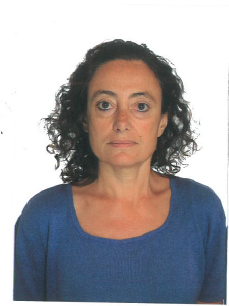Related Research Articles

Mitchell Jay Feigenbaum was an American mathematical physicist whose pioneering studies in chaos theory led to the discovery of the Feigenbaum constants.

Albert Fert is a French physicist and one of the discoverers of giant magnetoresistance which brought about a breakthrough in gigabyte hard disks. Currently, he is an emeritus professor at Paris-Saclay University in Orsay, scientific director of a joint laboratory between the Centre national de la recherche scientifique and Thales Group, and adjunct professor at Michigan State University. He was awarded the 2007 Nobel Prize in Physics together with Peter Grünberg.
In dynamical systems theory, a period-doubling bifurcation occurs when a slight change in a system's parameters causes a new periodic trajectory to emerge from an existing periodic trajectory—the new one having double the period of the original. With the doubled period, it takes twice as long for the numerical values visited by the system to repeat themselves.
Philippe Pierre Gaston François Nozières was a French physicist working at Institut Laue-Langevin in Grenoble, France.
Henri Claude Bénard was a French physicist, best known for his research on convection in liquids that now carries his name, Bénard convection. In addition, the historical surveys of both Tokaty and von Kármán both acknowledge that Bénard studied the vortex shedding phenomenon later named the Kármán vortex street, prior to von Karman's own contributions. Bénard specialized in experimental fluid dynamics, and the use of optical methods to study it. He was a faculty member at the universities at Lyon, Bordeaux, and finally the Sorbonne in Paris.

Henri Abraham (1868–1943) was a French physicist who made important contributions to the science of radio waves. He performed some of the first measurements of the propagation velocity of radio waves, helped develop France's first triode vacuum tube, and with Eugene Bloch invented the astable multivibrator.

In fluid thermodynamics, Rayleigh–Bénard convection is a type of natural convection, occurring in a planar horizontal layer of fluid heated from below, in which the fluid develops a regular pattern of convection cells known as Bénard cells. Bénard–Rayleigh convection is one of the most commonly studied convection phenomena because of its analytical and experimental accessibility. The convection patterns are the most carefully examined example of self-organizing nonlinear systems.
Antoine Georges is a French physicist. He is a professor at the Collège de France in Paris and the director of the Center for Computational Quantum Physics at the Flatiron Institute, New York.
Claude Fabre is a French physicist, professor emeritus at the Sorbonne University and member of the Kastler-Brossel Laboratory of Sorbonne University, École normale supérieure and Collège de France.
Robert P. Behringer was an American physicist based at Duke University, whose research first dealt with critical phenomena and transport properties in fluid helium, such as Rayleigh–Bénard convection, and since 1986 was involved with granular material, where his most notable achievements were in the development of the technique of photoelasticity to study spatio-temporal fluctuations. This enabled him to extract vector forces from images of photo-elastic disks, which are models for granular materials. His research demonstrated the strongly fluctuating nature of granular flows. Another aspect of his research involved the concept of jamming in granular materials.
The Three Physicists Prize is a physics prize awarded by the École Normale Supérieure (ENS) in Paris and the Eugène Bloch Foundation. It is named in honour of the physicists Henri Abraham, Eugene Bloch and Georges Bruhat, who were successive directors of the physics laboratory at the ENS and all of whom were murdered in Nazi concentration camps between 1943 and 1945. The prize was established by Bloch's widow.

Itamar Procaccia is an Israeli physicist and chemist who has made contributions to areas in statistical physics, nonlinear dynamics, soft matter, and turbulence.
Michel Jacques Louis Baranger was a Franco-American theoretical physicist.
Vyacheslav Rychkov is a Russian-Italian-French theoretical physicist and mathematician.
Michel Davier is a French physicist.
Stéphan Fauve is a French physicist. He is a professor at the École normale supérieure (ENS) in Paris, a member of the ENS Physics Laboratory.

Lenka Zdeborová is a Czech physicist and computer scientist who applies methods from statistical physics to machine learning and constraint satisfaction problems. She is a professor of physics and computer science and communication systems at EPFL.
Yves Pomeau, born in 1942, is a French mathematician and physicist, emeritus research director at the CNRS and corresponding member of the French Academy of sciences. He was one of the founders of the Laboratoire de Physique Statistique, École Normale Supérieure, Paris. He is the son of René Pomeau.

Leticia Fernanda Cugliandolo is an Argentine condensed matter physicist known for her research on non-equilibrium thermodynamics, spin glass, and glassy systems. She works in France as a professor of physics at the Sorbonne University.
Robert Everett Ecke is an American experimental physicist who is a Laboratory Fellow and Director Emeritus of the Center for Nonlinear Studies (CNLS) at Los Alamos National Laboratory and Affiliate Professor of Physics at the University of Washington. His research has included chaotic nonlinear dynamics, pattern formation, rotating Rayleigh-Bénard convection, two-dimensional turbulence, granular materials, and stratified flows. He is a Fellow of the American Physical Society (APS) and of the American Association for the Advancement of Science (AAAS), was Chair of the APS Topical Group on Statistical and Nonlinear Physics, served in numerous roles in the APS Division of Fluid Dynamics, and was the Secretary of the Physics Section of the AAAS.
References
- ↑ "Albert J. Libchaber at Rockefeller University". The Rockefeller University. Retrieved 8 October 2018.
- ↑ Mukerjee, M. (1996) Profile: Albert Libchaber – Seeing the World in a Snowflake, Scientific American 274(3), 36-42.
- ↑ Source: Eric Siggia (2019-04-17). "Interview with Dr. Libchaber for the American Institute of Physics, Oral History Collection".
{{cite journal}}: Cite journal requires|journal=(help) - ↑ "Wolf Prize citation". Archived from the original on 2016-09-23. Retrieved 2013-03-16.
- Libchaber A, Mauer J. "Une Experience de Rayleigh-Benard en geometrie reduite: multiplication, accrochage et demultiplication des frequences", Journal de Physique, Colloques 41 C3, 1980, p. 51-56
- Libchaber A, Mauer J. "A Rayleigh Benard Experiment: Helium in a small box“, Proceedings NATO Advanced Summer Institute on Nonlinear Phenomena, 1982, p. 259
- A Libchaber, C Laroche, S Fauve. "2-Parameter Study of the Routes to Chaos", Physica D, V.7, 1983, p. 73-84
- A Libchaber, C Laroche, S Fauve. "Period doubling cascade in mercury, a quantitative measurement", Journal de Physique Lettres, V.43, 1982, p. 211-216
- Libchaber Albert, Vincent Noireaux. "A vesicle bioreactor as a step toward an artificial cell assembly". Proceedings of the National Academy of the USA, V. 101, 2004, p. 17669